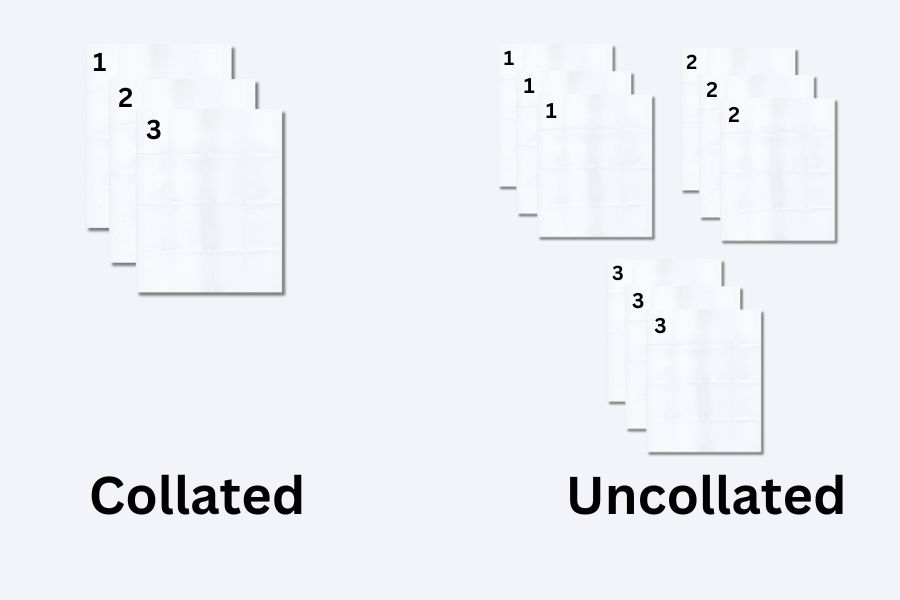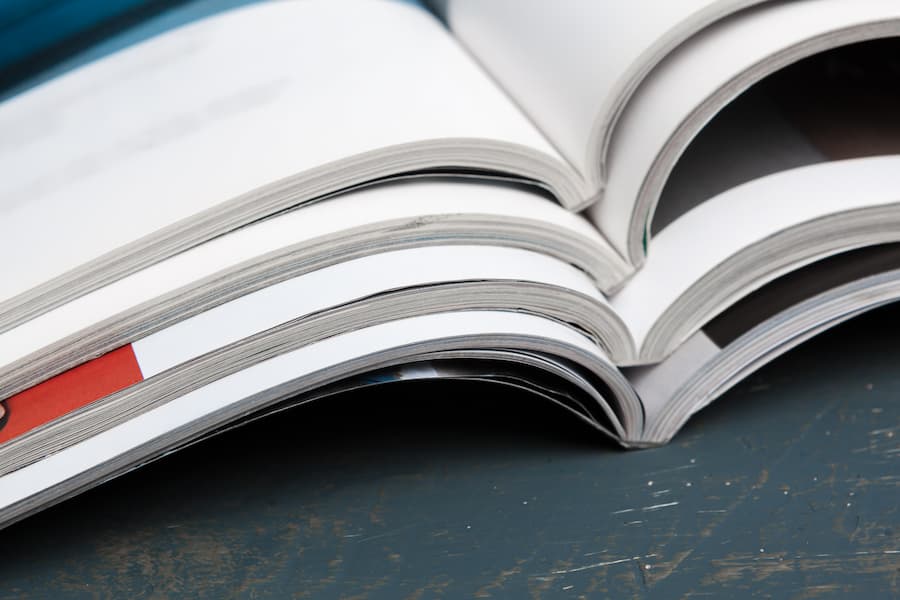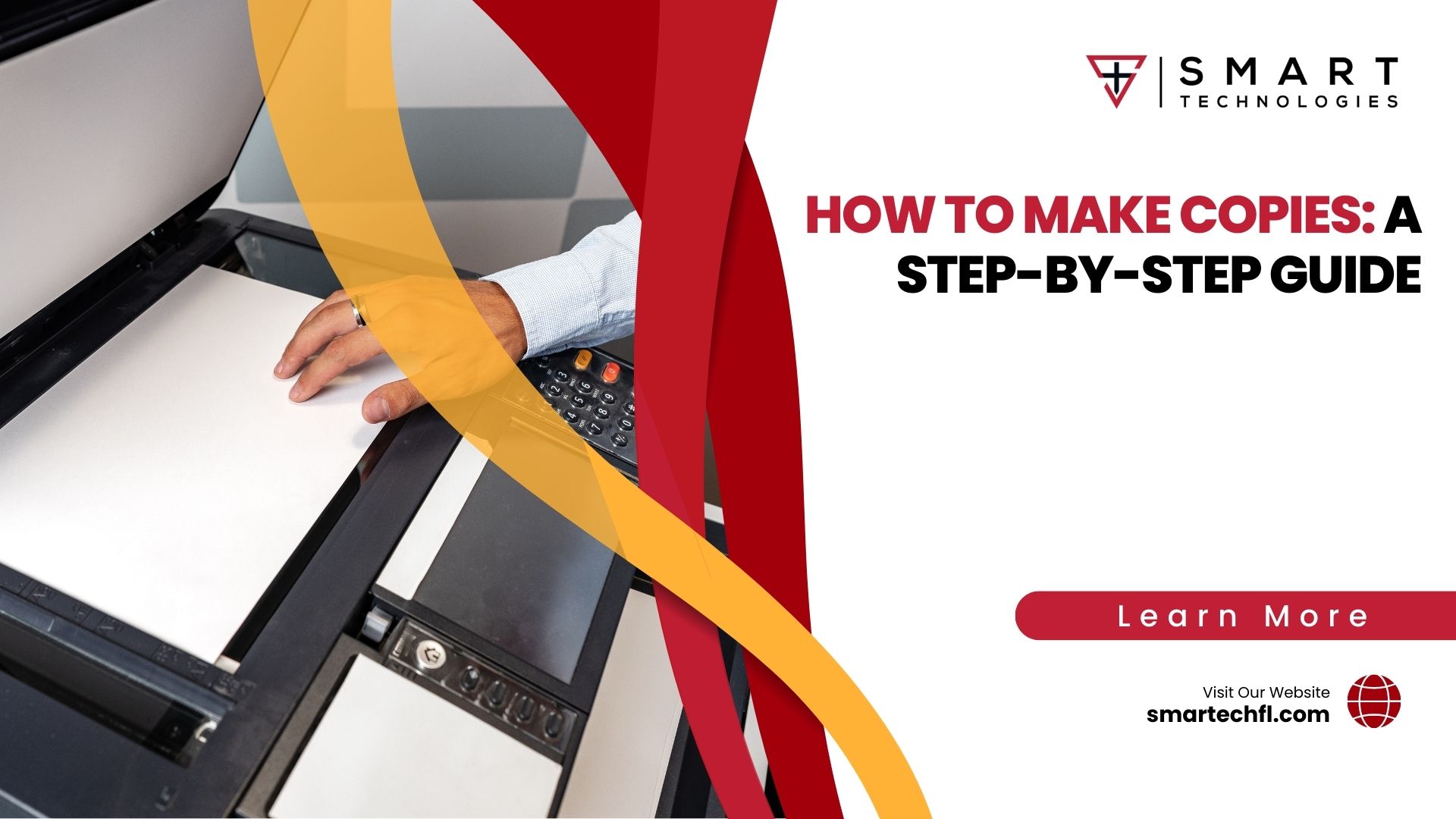What is Collate Mean? Mastering in Collate Printing
Collate Printing
Have you ever faced a stack of loose papers, desperately trying to put them in the correct order? This is the problem of anyone dealing with uncollated printing. But fear not, there’s an option in the world of printing known as collate printing.
Collate printing is the magical process of arranging multiple copies of a multi-page document in the specific order you desire. Imagine printing a booklet or report – without collating, your printer would churn out stacks of page 1, then page 2, and so on. Collate printing, however, ensures each copy has pages printed in the sequential order you intended, saving you the time and frustration of manual sorting.
This technology is a game-changer for businesses, designers, and anyone who needs professional-looking, multi-page printed materials. Let’s delve deeper into the mean of collate printing and explore how it can elevate your next project.
Understanding Collate Printing
What Does Collate Mean?
Collation, in essence, means to arrange or gather items in a particular sequence. Collate printing takes this concept and applies it to the world of printing presses. Unlike its uncollated counterpart, which prints each page of a document in its entirety before moving on to the next, collate printing treats each print job as a complete set. It intelligently prints page 1 for every copy, then page 2, and so on, ensuring each finished product has its pages in the correct order.

Think of it like assembling a puzzle – uncollated printing gives you all the pieces scattered, while collated printing presents the completed picture. This meticulous process eliminates the need for manual sorting, a significant time saver for large projects.
The Collating Journey
The journey of a collated document begins with proper file preparation. Using a universally accepted format like PDF, documents are readied for printing. The printer then takes over, meticulously following the pre-programmed sequence.
Modern printers employ sophisticated sorting mechanisms that separate and arrange each printed page. Imagine a tiny robot arm delicately stacking pages in the correct order for each copy – that’s the magic of collating!
Finally, the printer delivers a final product that’s ready for use, with each copy boasting its pages in the intended sequential order.
A Spectrum of Collating Options
While the core principle of arranging pages remains constant, collating offers a spectrum of finishing options. Saddle stitching, for example, uses staples to bind pages together, perfect for booklets and reports.
Perfect binding creates a more professional look with a glued spine, commonly used for magazines and high-quality brochures. The choice of binding technique depends on the specific needs of your project.
Benefits of Collate Printing

Imagine the frustration of receiving a box full of uncollated reports, each page a will be a problem if you are printing multiple copies. Collate printing eliminates this scenario, offering a multitude of benefits for your printing projects.
Efficiency at Your Fingertips
Collate printing is a champion of time saving. By automatically arranging pages in the correct order, it eliminates the tedious and error-prone task of manual sorting. This translates to significant time savings, especially for projects with a high volume of multiple copies. Businesses that deal with frequent reports, presentations, or marketing materials can reap the rewards of this efficiency boost.
Accuracy You Can Trust
Human error is inevitable. When manually sorting large quantities of documents, the risk of misplaced pages or incorrect order increases. Collate printing eliminates this risk factor. The automated process ensures each print job adheres to the pre-programmed sequence, resulting in accurate and reliable finished products. This eliminates the frustration of missing pages or finding them out of order, a crucial benefit for documents with critical information.
Professionalism Makes a Difference
First impressions matter, and collated documents project a professional image. A neatly bound booklet or report with pages in the correct order speaks volumes about your attention to detail and commitment to quality. Compared to a stack of loose papers, collated documents enhance your brand image and create a positive impression on clients or colleagues.
Cost-Effectiveness: A Hidden Advantage
While the initial cost per copy might seem slightly higher with collating, it can be surprisingly cost-effective for large projects. Consider the time and resources saved by eliminating manual sorting. Additionally, the reduced risk of errors with collating translates to fewer reprints, further minimizing overall costs.
Applications of Collate Printing
Collate printing isn’t a one-trick pony – it offers a versatile range of applications for your printing needs. Let’s explore some of the common scenarios where collating shines.
Business Documents – The Power of Organization
Imagine a world where business documents like reports, presentations, and proposals magically appear in the correct order. Collate printing makes this a reality.
For businesses that deal with large volumes of paperwork, collating ensures each print job emerges with pages neatly arranged, saving valuable time and reducing the risk of errors. Imagine a flawlessly assembled report, ready to impress clients, or a presentation with pages in the correct order, guaranteeing a smooth delivery. Collating eliminates the need for manual sorting, a major advantage for busy professionals.
Brochures and Pamphlets
Brochures and pamphlets are the face of your brand, and collate printing helps them make a stellar first impression. For these multi-page marketing materials, collating ensures each folded brochure boasts pages in the predetermined order. This meticulous arrangement creates a polished and professional look, far superior to a stack of loose papers. Whether showcasing your latest product or promoting an upcoming event, collated brochures exude quality and attention to detail.
Books and Magazines

The world of book printing and magazine publishing heavily relies on collating. Imagine a novel without its pages in sequence – the story would be a chaotic mess! Collating takes center stage here, ensuring each book or magazine emerges with its pages meticulously arranged in the correct order. This intricate process is essential for crafting a cohesive reading experience. The next time you delve into a captivating book or a glossy magazine, remember the invisible magic of collating at work.
Other Applications
The applications of collate printing extend far beyond these examples. Booklets, calendars, and workbooks all benefit from the convenience and accuracy it offers. For any printing project requiring multiple pages in a specific sequence, collating is your reliable ally.
Choosing a Collate Printing Service
Now that you’re sold on the benefits of collate printing, let’s delve into selecting the perfect printing service for your needs. Here’s a roadmap to guide you.
Considering the Essentials
Several factors come into play when choosing a collate printing service. The paper quality is paramount – do you need crisp, professional-grade paper for a report, or a more economical option for a flyer?
Printing options like color or black and white also need consideration. Think about the desired binding type. Saddle stitching is a popular choice for booklets, while perfect binding creates a more robust feel for magazines. Turnaround time and pricing are crucial factors as well. Don’t hesitate to compare quotes from different printing services to find the best fit for your project.
File Preparation – Getting it Right from the Start
For a seamless collating experience, proper file preparation is key. Most printing services require universally accepted formats like PDF. Ensure your document layout is optimized for collating – page numbers and margins should be consistent throughout. Double-check for any errors before submitting your files to avoid delays or reprints.
Communication is Key
Clear communication with your chosen printing service ensures a successful outcome. Discuss your project specifications in detail, including the number of copies required, the desired printing options (color or black and white), and the preferred binding type.
If you have any specific requirements regarding the collating process, don’t hesitate to mention them. A collaborative approach with your printing partner guarantees a final product that meets your expectations.
Quality Control
Once you receive your collated documents, take a moment to inspect them thoroughly. Check for errors like missing pages or incorrect order. Verify that the printing quality is up to par, with crisp text and vibrant colors (if applicable). The collate option should ensure each copy boasts pages in the correct sequence. By performing a quick quality check, you can address any minor issues before distribution. Moreover, collate printing refers to create in a perfect order of pages. Its very irritating to reorder the uncollated printed documents. But with collate in printing save time as well as done job perfectly.
By following these guidelines, you can confidently select a collate printing service that delivers exceptional results for your next project.
What May People Also Ask
Collate vs. Staple: What’s the Difference?
While both collating and stapling involve securing multiple sheets of paper, their purposes differ. Collating focuses on arranging pages in a specific order, ensuring your documents are assembled correctly. Stapling, on the other hand, simply binds sheets together without any emphasis on sequence. Imagine a stapled recipe book with pages all jumbled up – that wouldn’t be very helpful!
DIY Collating: Can You Do It at Home?
Yes, you can definitely collate documents at home for small projects. However, it can be time-consuming and prone to errors, especially for large volumes of pages. Home printers might not have a built-in collating function, requiring you to manually sort and arrange pages. For professional-looking results and larger projects, consider using a collate printing service.
File Format Frenzy: What’s Best for Collating?
When it comes to file formats for collate printing, PDF reigns supreme. This universally accepted format ensures your document layout and formatting remain consistent throughout the printing process. Avoid using formats like .docx or .pptx, as they might not translate perfectly to the printing press.
Conclusion
Collate printing offers a multitude of benefits for your printing projects. It streamlines the process, eliminates the risk of errors with manual sorting, and guarantees professional-looking results with pages in the correct order. Whether you’re printing reports for a meeting, creating brochures for your business, or crafting a captivating booklet, collating ensures a polished and organized final product.
So, the next time you have a printing project with multiple pages, consider the magic of collate printing. It’s a time-saving, accuracy-boosting superpower that will elevate your printed materials to the next level!
You can contact us by phone, email, or by visiting our offices:
- Phone: (386) 261-8323
- Email: contact@smarttechfl.com
- Address: 771 Fentress Blvd. #10, Daytona Beach, FL 32114











